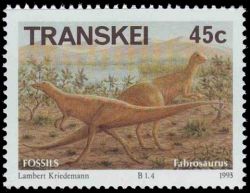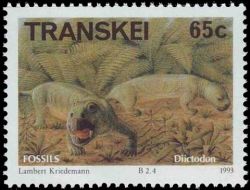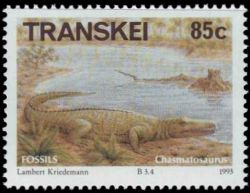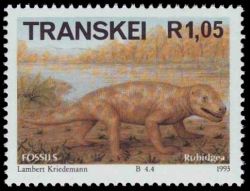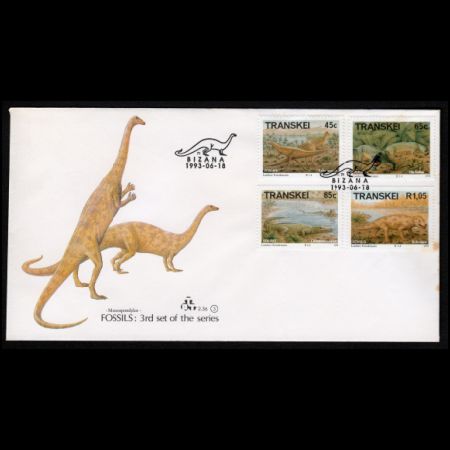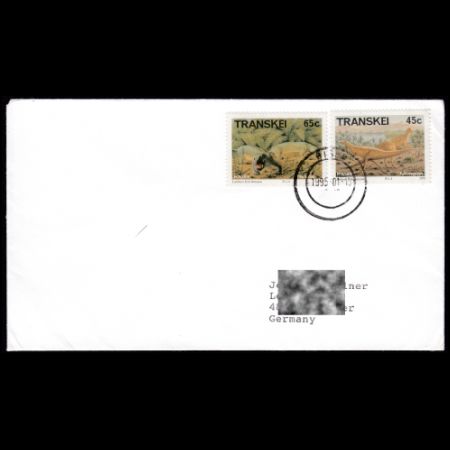| << prev | back to index | next >> |
| Issue Date | 18.06.1993 |
| ID | Michel: 303-306 Scott: 287-290 Stanley Gibbons: 301-304 Yvert: 303-306 UPU: N/A Category: pR |
| Author | Lambert Kriedemann |
| Stamps in set | 4 |
| Value | c45 Fabrosaurus c65 Diictodon c85 Chasmatosaurus Ft1,05 Rubidgea |
| Size (width x height) | |
| Layout | |
| Products | FDC x1 |
| Paper | |
| Perforation | 14.25 x 14 |
| Print Technique | Ofset |
| Printed by | |
| Quantity | |
| Issuing Authority |
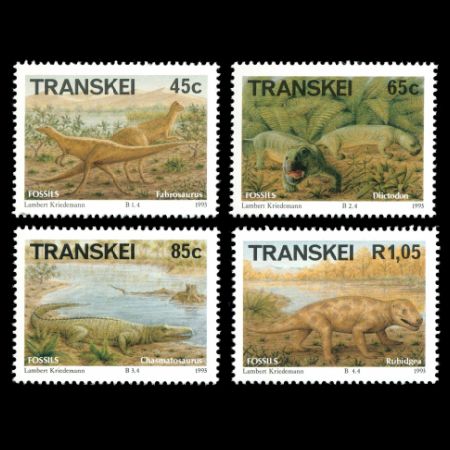
Fossil bones of extinct reptiles that inhabited southern Africa around 200 million years ago are found in the Karoo rocks of Transkei. This set of stamps shows reconstructions of four of these prehistoric vertebrates in their natural habitats, based on the available fossil evidence.
The Karoo rocks comprise cemented sand and mud originally laid down by large meandering rivers that flooded their banks and in the process buried numerous skeletons of ancient reptiles that lived and died on the flood plains, including dinosaurs. At that time, southern Africa was part of an enormous continent called Gondwana, which later drifted apart to form the current continents of the southern hemisphere. Consequently, similar fossils can be found in India, Antarctica and South America. The Karoo rocks contain the best fossil record in the world of the gradual evolution from reptiles through the mammal-like reptiles to the first mammals, which took place in southern Africa some 200 million years ago.
Text: Dr Roger Smith, Department Karoo Palaeontology. South African
Museum, Cape Town. NMB Pnmers
Related stamps:
Transkei 1990 "Fossils" 1st set of the series
Transkei 1992 "Fossils" 2nd set of the series
FDC Massospondylus is on illustration and postmark. This dinosaur became six metres
long and reared up to browse on the young leaves at the top of trees,
using its front legs to steady itself. Several complete skeletons of
Massospondylus have been found in Southern Africa |
Used cover |

|
References
Inside text of the FDC, Wikipedia| << prev | back to index | next >> |
Latest update 15.12.2017
Any feedback, comments or even complaints are welcome: admin@paleophilatelie.eu (you can email me on ENglish, DEutsch, or RUssian)
